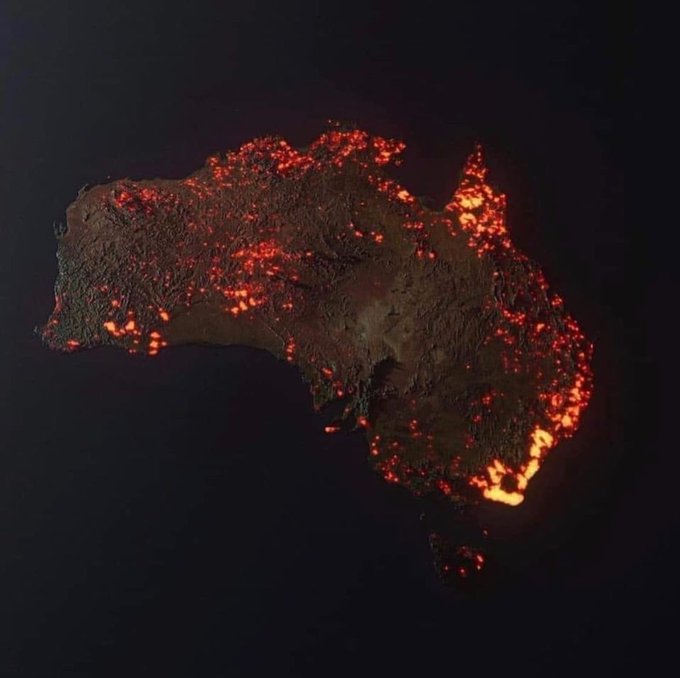Not long after news of a virus outbreak in the Chinese city of Wuhan began to spread worldwide, this image hit the internet:
Some
people claimed it was a map of Wuhan travellers across the 2020 Lunar
New Year. Tabloids in the United Kingdom picked it up. Channel 7's
Sunrise used it in a live segment.

But it did not represent the outbreak. It showed a year's worth of flights, from nine years ago.
After
a summer of devastating bushfires and the upheaval brought by
coronavirus, the first six months of 2020 have been defined by immense
change — and we've all been looking for answers.
A study by the News and Media Research Centre
found that even at the beginning of this year, Australia's demand for
news surged. Nearly half of those surveyed got their news online.
For
Anne Kruger, this triggered alarm bells. The Australia Pacific lead for
global fact-checker First Draft news told The Drum we're in the perfect
conditions for fake news to flourish.
"While you're waiting for information to come out, people are scrambling around to get what they can," she says.
Over
the summer of bushfires, fake news gripped our feeds. Misleading maps
went viral. Images were picked up and shared by high-profile
celebrities.
This image, shared by singer Rihanna, was incorrectly
interpreted to be a live representation of fires burning across
Australia.
However the map of red blazes was not real, but an artist's visualisation of an entire month of data.
Months on, the risks are still there — we're now just tackling a different situation, warns Kruger.
Know your fake news: How to spot a fraud
In
late January, a "Queensland Health" media release circulated online,
advising against "nonessential travel to Wuhan, China, Sunnybank,
Runcorn" and several other locations.
Using a
familiar format and an official logo, it looked like any other
government document. But very quickly, state MP Duncan Pegg stepped in
to call it out. It was a fake.
As technology develops, fake news is getting more
sophisticated. But there are a few key markers to test if you're unsure
if what you're reading is real.
The first is language: how is the issue being discussed?
When
the fake Queensland Health statement was released, many were quick to
pick up that only suburbs with higher Chinese-Australian populations
were singled out.
"If you look closer at the
language you could just tell they were picking on them. It didn't seem
quite right," says Anne Kruger.
Fake news tends to take advantage of our tendency to share content that evokes an emotional response.
They want your like, your share — even your angry reaction.
The second marker involves a good old-fashioned profile stalk. Namely, who, where and when.
"Look at 'who is this person, where are they and what else have they posted or shared in the past?'," says Anne Kruger.

"Quite
often, I've found accounts that have been set up literally the same
week or month that there's been a particular issue they've wanted to
criticise or comment on."
Finally, try to work out
why the post is being shared in the first place. First Draft News boils
it down to three broad areas. The first is power; anyone looking to push
an ideology, politics — even conspiracy people.
The
other is financial gain. Is someone trying to get your money through
this post? Whether it be a donation, merchandise, or a product.
And finally: it could just be general mischief. Each area shows how vast and varied fake news content can be.
So, how do we fight it?
The first step is simple: wait.
"I
always say, have that seven-second delay before you like anything,
before you send anything, because you're feeding the algorithm," says
Anne Kruger.
If you think an image, a tweet or a story looks a bit dodgy, do not engage.
However,
if you want to do your part in stamping misinformation or
disinformation out, Anne Kruger recommends you try to verify it — with
the help of experts.
"If you find something that's suss, send it in as a tip to your reliable news organisation."
First
Draft News is leading a coordinated effort to stamp out fake news.
Twelve organisations have come together to identify, document and expose
it.
Kruger says even just sending in a screenshot can be a significant help in filling a 'data void'.
"It's just too much information for newsrooms to do this alone; too many groups to follow and monitor."
The Drum airs weeknights on ABC and News Channel.

No comments:
Post a Comment